It looks like you're using an Ad Blocker.
Please white-list or disable AboveTopSecret.com in your ad-blocking tool.
Thank you.
Some features of ATS will be disabled while you continue to use an ad-blocker.
share:
This is seriously cool.
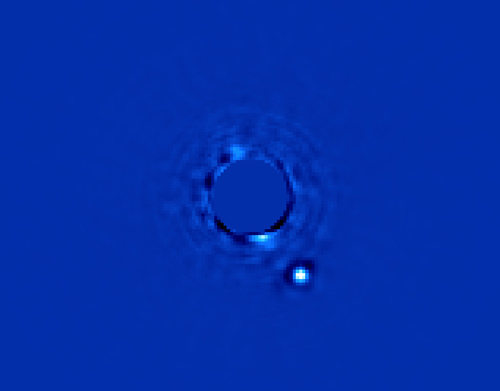
Apparently they've got a list of 600 systems they're going to be directly imaging in the coming months. Planet hunting has officially just reached a new level!
More Info
After nearly a decade of development, construction, and testing, the world’s most advanced instrument for directly imaging and analyzing planets around other stars is pointing skyward and collecting light from distant worlds.
The instrument, called the Gemini Planet Imager (GPI), was designed, built, and optimized for imaging faint planets next to bright stars and probing their atmospheres. It will also be a powerful tool for studying dusty, planet-forming disks around young stars. It is the most advanced such instrument to be deployed on one of the world’s biggest telescopes – the 8-meter Gemini South telescope in Chile.

Gemini Planet Imager’s first light image of Beta Pictoris b, a planet orbiting the star Beta Pictoris. The star, Beta Pictoris, is blocked in this image by a mask so its light doesn’t interfere with the light of the planet. In addition to the image, GPI obtains a spectrum from every pixel element in the field of view to allow scientists to study the planet in great detail.
Beta Pictoris b is a giant planet – several times larger than Jupiter – and is approximately ten million years old. These near-infrared images (1.5-1.8 microns) show the planet glowing in infrared light from the heat released in its formation. The bright star Beta Pictoris is hidden behind a mask in the center of the image.
Image credit: Processing by Christian Marois, NRC Canada.
Apparently they've got a list of 600 systems they're going to be directly imaging in the coming months. Planet hunting has officially just reached a new level!
More Info
edit on 8-1-2014 by MarsIsRed because: (no reason given)
edit on 8-1-2014 by MarsIsRed because: (no reason given)
Another


Gemini Planet Imager’s first light image of the light scattered by a disk of dust orbiting the young star HR4796A. This narrow ring is thought to be dust from asteroids or comets left behind by planet formation; some scientists have theorized that the sharp edge of the ring is defined by an unseen planet. The left image (1.9-2.1 microns) shows normal light, including both the dust ring and the residual light from the central star scattered by turbulence in the Earth’s atmosphere. The right image shows only polarized light. Leftover starlight is unpolarized and hence removed from this image. The light from the back edge of the disk is strongly polarized as it scatters towards us.
Image credit: Processing by Marshall Perrin, Space Telescope Science Institute.
NICE!
Been waiting for this for a while now and its more beautiful than i imagined and a lot more blue ;p
Been waiting for this for a while now and its more beautiful than i imagined and a lot more blue ;p
Our kids are going to be living in such a different world....It just amazes me....
reply to post by MarsIsRed
That is soooo cool! I hope they will film a timelapse of planets orbiting their stars. I also wonder if they can take RGB images, so that we could see those planets in colour!
That is soooo cool! I hope they will film a timelapse of planets orbiting their stars. I also wonder if they can take RGB images, so that we could see those planets in colour!
Truely facinating. I find it amazing how on this tiny planet, amongst the cosmos, we can peer into the entire vastness of the universe.
"I believe our future depends powerfully on how well we understand this Cosmos in which we float like a mote of dust in the morning sky." - Carl Sagan
zeroBelief
Our kids are going to be living in such a different world....It just amazes me....
When I was a kid I was very much into astronomy. I used to have loads of printed star charts.
Now, kids will have 3D maps of star systems. I think that will bring about a totally different mind set, about our place in the universe, and the value of our planet.
That is so cool. Very interested to see what comes next! Just awesome!
Most excellent!
I've been waiting for decades for this to finally be achieved!
I've been waiting for decades for this to finally be achieved!
Biigs
NICE!
Been waiting for this for a while now and its more beautiful than i imagined and a lot more blue ;p
Not their true color. This is a monochromatic image.
wildespace
reply to post by MarsIsRed
That is soooo cool! I hope they will film a timelapse of planets orbiting their stars.
That's being done as we speak and started years ago:
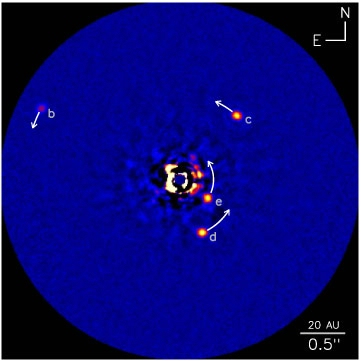
eriktheawful
Most excellent!
I've been waiting for decades for this to finally be achieved!
Daver2056
That is so cool. Very interested to see what comes next! Just awesome!
They are, that's why I posted these images yesterday.
If you're interested in what comes next see the thread I started days ago which said to expect a lot of news this week.and am keeping updated with results from the AAS meeting (which is why this is even a story). See ATS: Most Earthlike Planet Candidates to Date Revealed by NASA in Latest Kepler Data Release
It has a 30 year roadmap which NASA just published so you can see where this is all headed.
NOW... in the interest of Denying Ignorance...
One thing to note, they are NOT the first images of an extrasolar planet (even though the MSM has misreported them as such).
See this story from 2008 for that.
Hubble snapped this one of a planet around Fomalhaut in 2008:
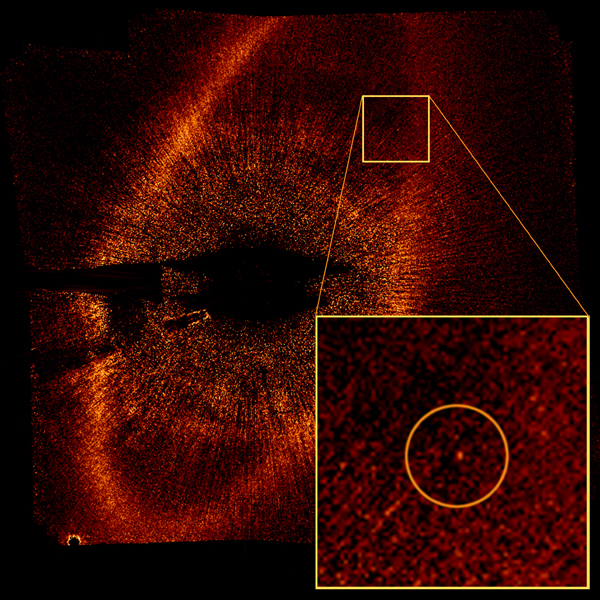
It's not even the first one of an exoplanet from the Gemini. This one was snapped in 2008 as well:
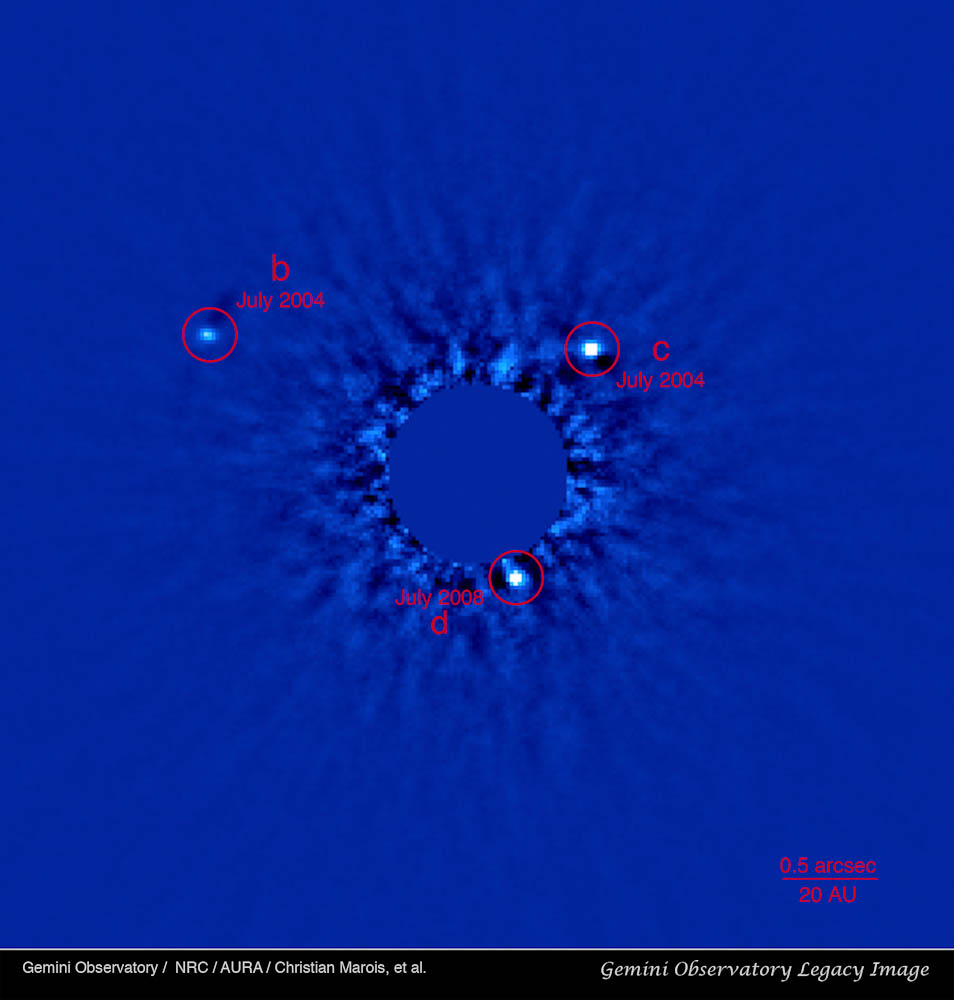
These new images from the OP are just the first images of an exoplanet from this particular NEW INSTRUMENT on the Gemini telescope.
Here are other images that have been taken prior to this..
The three planets of HR 8799 imaged by the Keck telescope in Hawaii too:

Like I said, if you want to see what's next see that thread I referenced as I posted excerpts from what may be on the horizon over the next 10, 20 and 30 years.
edit on 8-1-2014 by JadeStar because: (no reason given)
Wow !!!! why isn't this on the front page of every news paper in the world? This is massive
Pity the marketing people will start naming them planet Nike or something.
Lets name them Tatooine or Vulcan
Pity the marketing people will start naming them planet Nike or something.
Lets name them Tatooine or Vulcan
reply to post by JadeStar
You are correct about previous direct images of planets, but there is one particular takeaway from Gemini:
What used to be a very difficult effort to extract images of planet from the surrounding starlight is now a fairly simple affair. Many, many more planets can now be imaged...
And most importantly, this well and truly paves the way for high quality spectra, and the tantalising possibility of detecting oxygen and methane in a planet's atmosphere, the implications of which we all understand!
You are correct about previous direct images of planets, but there is one particular takeaway from Gemini:
“Even these early first-light images are almost a factor of 10 better than the previous generation of instruments. In one minute, we are seeing planets that used to take us an hour to detect,” says Bruce Macintosh of the Lawrence Livermore National Laboratory who led the team that built the instrument.
What used to be a very difficult effort to extract images of planet from the surrounding starlight is now a fairly simple affair. Many, many more planets can now be imaged...
And most importantly, this well and truly paves the way for high quality spectra, and the tantalising possibility of detecting oxygen and methane in a planet's atmosphere, the implications of which we all understand!
edit on 8-1-2014 by MarsIsRed because: (no reason given)
reply to post by MarsIsRed
Thanks to both MarsIsRed (great name) and to JadeStar (great and pretty name) for sharing both the images and the data with us. I saw this yesterday in JadeStar's thread, and her post here provides a really nice summary. You both should get and deserve thousands of stars - one for every planet to be found and photographed very soon!
Thanks to both MarsIsRed (great name) and to JadeStar (great and pretty name) for sharing both the images and the data with us. I saw this yesterday in JadeStar's thread, and her post here provides a really nice summary. You both should get and deserve thousands of stars - one for every planet to be found and photographed very soon!
edit on 8-1-2014 by Aleister because: (no reason given)
Those halos are spectacular, are these halos in the habital zone per chance?
symptomoftheuniverse
Those halos are spectacular, are these halos in the habital zone per chance?
The inner edge of the ring is over 50au from the star, but it's shape and position strongly suggests that planets have already formed closer to the star - although none have been detected (yet). Interestingly, tholins have been detected in this material - tholins are complex organic molecules formed by ultraviolet light on simpler organic molecules, and are thought to be among several chemical precursors to life.
edit on 8-1-2014 by
MarsIsRed because: (no reason given)
MarsIsRed
reply to post by JadeStar
You are correct about previous direct images of planets, but there is one particular takeaway from Gemini:
“Even these early first-light images are almost a factor of 10 better than the previous generation of instruments. In one minute, we are seeing planets that used to take us an hour to detect,” says Bruce Macintosh of the Lawrence Livermore National Laboratory who led the team that built the instrument.
What used to be a very difficult effort to extract images of planet from the surrounding starlight is now a fairly simple affair. Many, many more planets can now be imaged...
Exactly. That's what the headline the MSM should have used should have been: "Scientists Develop Exoplanet Imaging Breakthrough to Take Pictures of Hundreds of Worlds".
It still would have had the "pizazz" and impact but would have been more accurate for why the story is important. Calling something first in a headline when it is not makes them look very misinformed and the most important point was buried in the story.
And most importantly, this well and truly paves the way for high quality spectra, and the tantalising possibility of detecting oxygen and methane in a planet's atmosphere, the implications of which we all understand!
Yep! I can't wait until we can start getting detailed spectra of smaller planets like the Earth though. That won't be for awhile but these images of larger planets and the spectra from them will give us a lot of practice and teach us much about them and the process as we edge closer to the holy grail, pictures of Super Earth and eventually Earth sized planets.
that star is only 8 million years old and similar to our sun,could those thoslins end up in the equivalent as a heavy bombardment and end up on an inner rocky planet? Very interesting and thanks for inspiring me to read up on HR4796A. Great thread.
MarsIsRed
symptomoftheuniverse
Those halos are spectacular, are these halos in the habital zone per chance?
The inner edge of the ring is over 50au from the star, but it's shape and position strongly suggests that planets have already formed closer to the star - although none have been detected (yet). Interestingly, tholins have been detected in this material - thoslins are complex organic molecules formed by ultraviolet light on simpler organic molecules, and are thought to be among several chemical precursors to life.
MarsIsRed
symptomoftheuniverse
Those halos are spectacular, are these halos in the habital zone per chance?
The inner edge of the ring is over 50au from the star, but it's shape and position strongly suggests that planets have already formed closer to the star - although none have been detected (yet). Interestingly, tholins have been detected in this material - thoslins are complex organic molecules formed by ultraviolet light on simpler organic molecules, and are thought to be among several chemical precursors to life.
One thing to note when talking about the potential for life around this particular star is that it won't last very long.
HR 4796A is an A class star. A0 V to be exact. (Our sun is a G2 V.)
Now while it, like every star has a habitable zone:
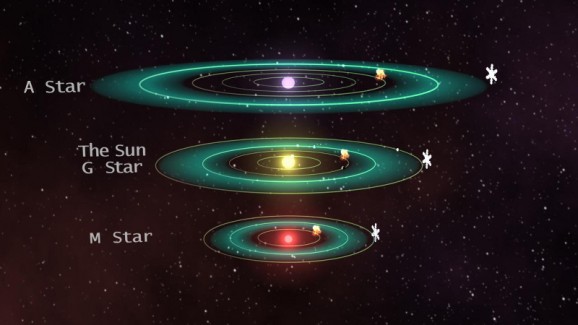
HR 4796A's lifespan will be much shorter than our Sun's because it is larger/more massive:
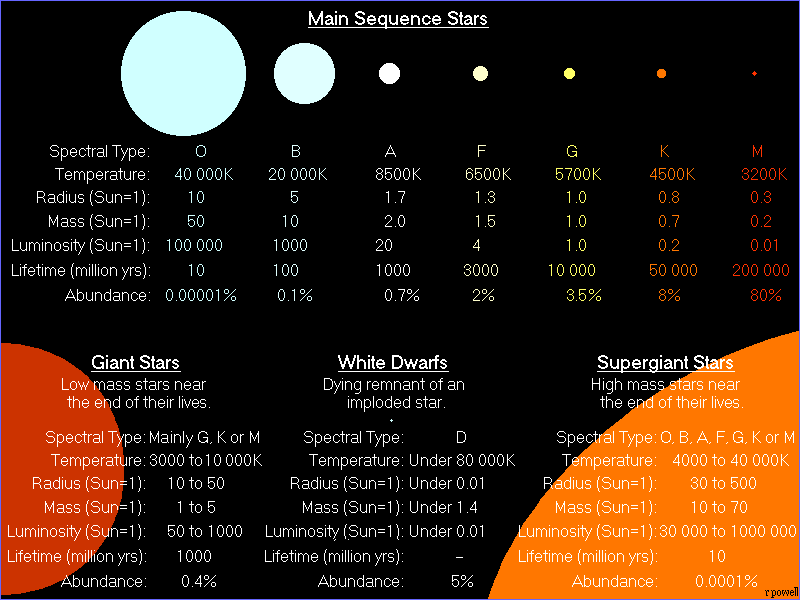
This is because the more massive/bright the star, the shorter the life as shown on this chart:
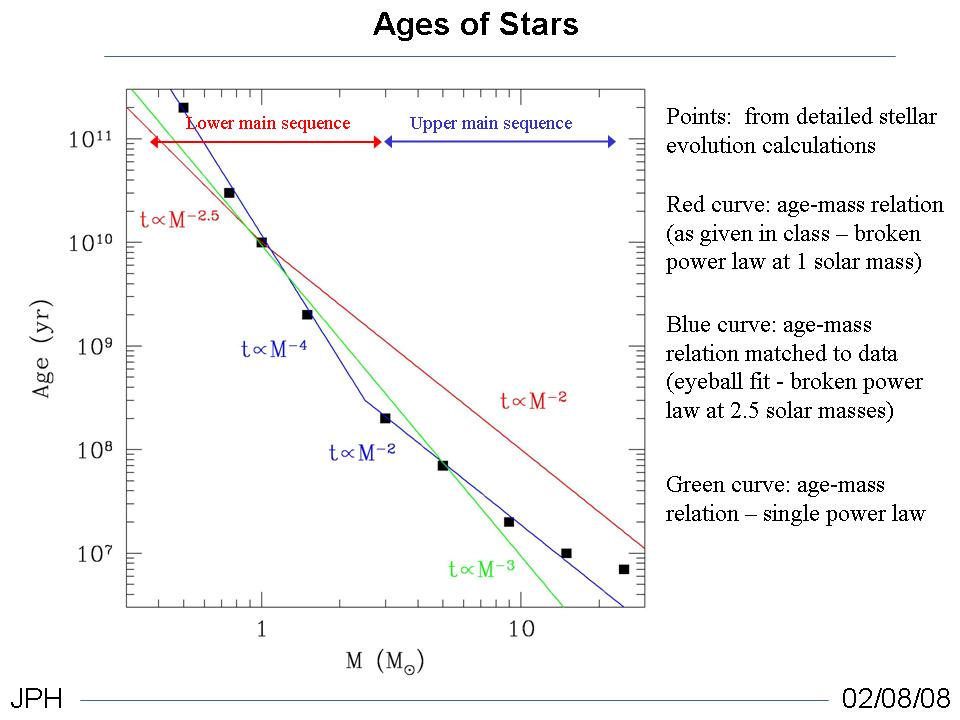
The more massive the star, the sooner its death spiral (leaving the main sequence) begins.
Live fast, shine brightly, die young.
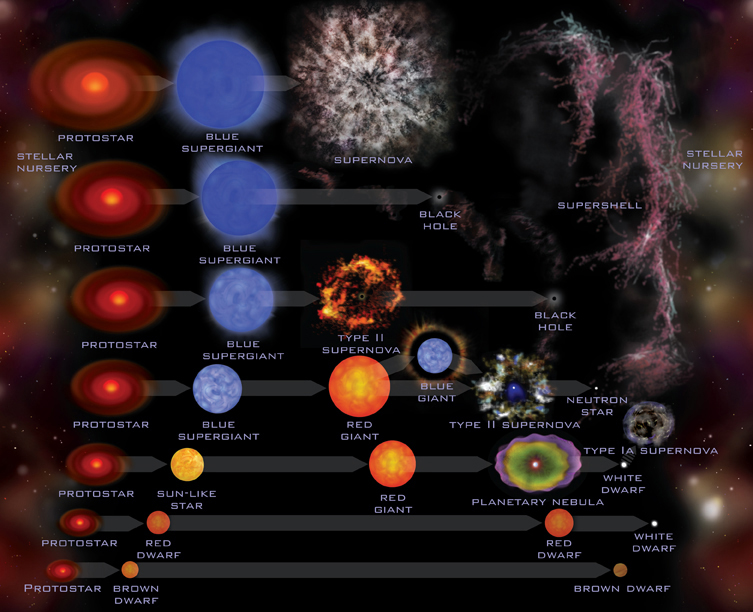
So any life on planets around this star won't have much time to evolve. The star system is only around 8 million years (+/- 2 million years) old (as opposed to our Sun's 4.5 billion years).
It's lifespan will only be around 1 billion years or less than a quarter of the current age of our Sun.

edit on 8-1-2014 by JadeStar because: (no reason given)
reply to post by JadeStar
In theory, we should be able to directly image any rocky planet in high resolution - at least in a way. I thought about this years ago, and the idea is pretty sound.
As a planet rotates, you'd need to image it many times - perhaps every 5 degrees of rotation, for many exo-days. The slight variation in brightness allows you to create a 'difference map' between the area that left the field of view, and the area that just emerged. Over many observations, and assuming a true earth analogy, you could easily create a reasonably accurate estimate of the relative distribution between land and sea (and cloud cover).
In theory, we should be able to directly image any rocky planet in high resolution - at least in a way. I thought about this years ago, and the idea is pretty sound.
As a planet rotates, you'd need to image it many times - perhaps every 5 degrees of rotation, for many exo-days. The slight variation in brightness allows you to create a 'difference map' between the area that left the field of view, and the area that just emerged. Over many observations, and assuming a true earth analogy, you could easily create a reasonably accurate estimate of the relative distribution between land and sea (and cloud cover).
JadeStar
One thing to note when talking about the potential for life around this particular star is that it won't last very long.
HR 4796B, on the other hand, formed out of the same 'stuff'. Assuming that 'A' didn't steal all the material (which is a distinct possibility) the red dwarf could one day harbour life. Unlikely, I agree - but still possible (or maybe wishful thinking on my part!).
new topics
-
Interesting Video-UFO?
Aliens and UFOs: 18 minutes ago -
Joe Biden Dabs Away Tears at Farewell White House Dinner
Politicians & People: 40 minutes ago
top topics
-
What if this is true?
2024 Elections: 17 hours ago, 15 flags -
Ed Dowd some good news
Medical Issues & Conspiracies: 15 hours ago, 7 flags -
Anyone like the Scorpions?
Music: 16 hours ago, 6 flags -
Joe Biden Dabs Away Tears at Farewell White House Dinner
Politicians & People: 40 minutes ago, 2 flags -
Interesting Video-UFO?
Aliens and UFOs: 18 minutes ago, 1 flags
active topics
-
Interesting Video-UFO?
Aliens and UFOs • 1 • : KnowItAllKnowNothin -
Petition Calling for General Election at 564,016 and rising Fast
Political Issues • 73 • : AdultMaleHumanUK -
International Criminal Court Issues Arrest Warrant For Netanyahu
Mainstream News • 51 • : FullHeathen -
Joe Biden Dabs Away Tears at Farewell White House Dinner
Politicians & People • 1 • : Enduro -
Ed Dowd some good news
Medical Issues & Conspiracies • 34 • : Boomer1947 -
Russia Ukraine Update Thread - part 3
World War Three • 6887 • : Freeborn -
Inca stone masonry at Sacsayhuaman, Ollantaytambo and the Sun Temple
Ancient & Lost Civilizations • 20 • : Hansllune -
Post A Funny (T&C Friendly) Pic Part IV: The LOL awakens!
General Chit Chat • 7824 • : PorkChop96 -
A fix for the Trans players in sports
Social Issues and Civil Unrest • 21 • : BernnieJGato -
Anyone like the Scorpions?
Music • 11 • : putnam6
